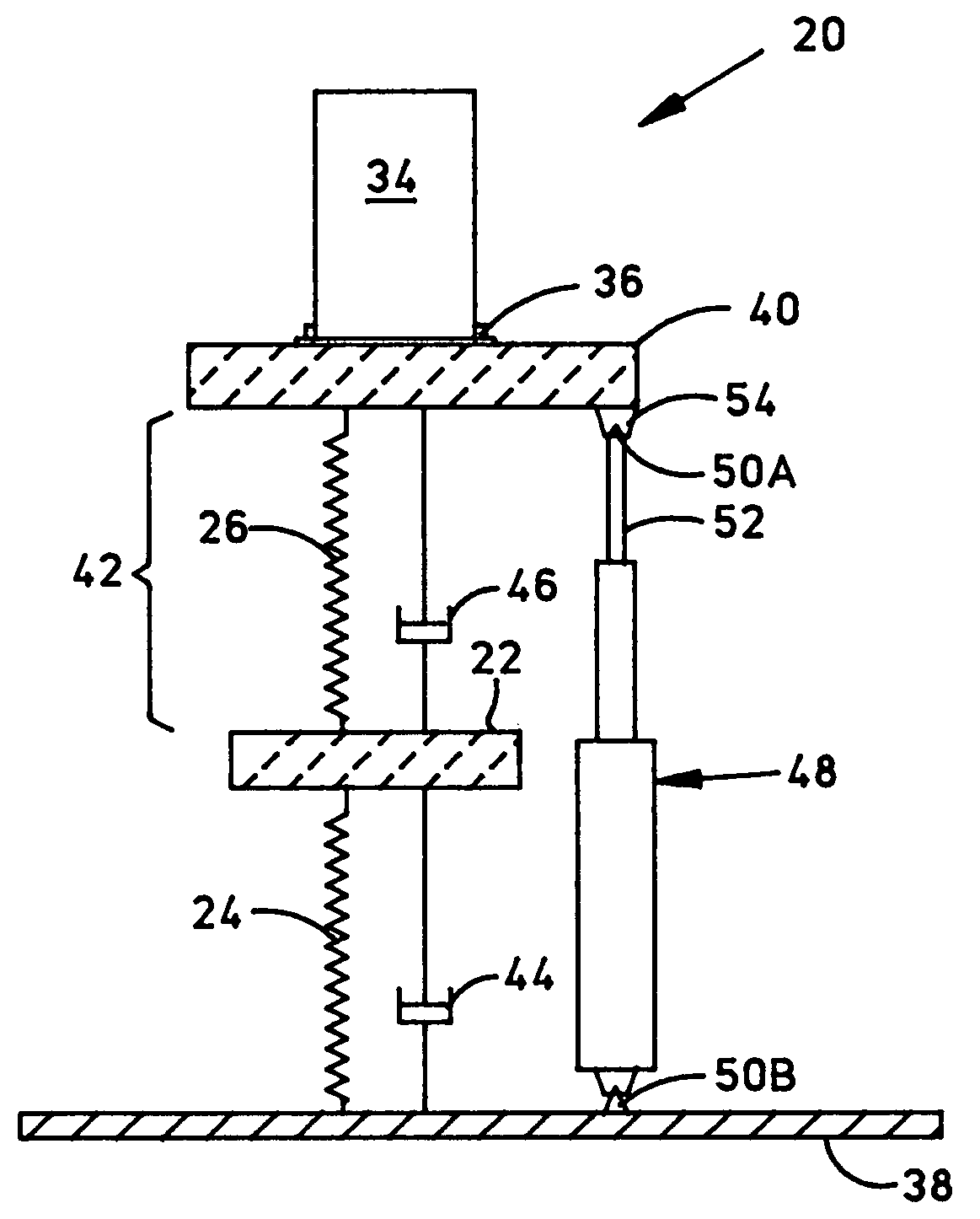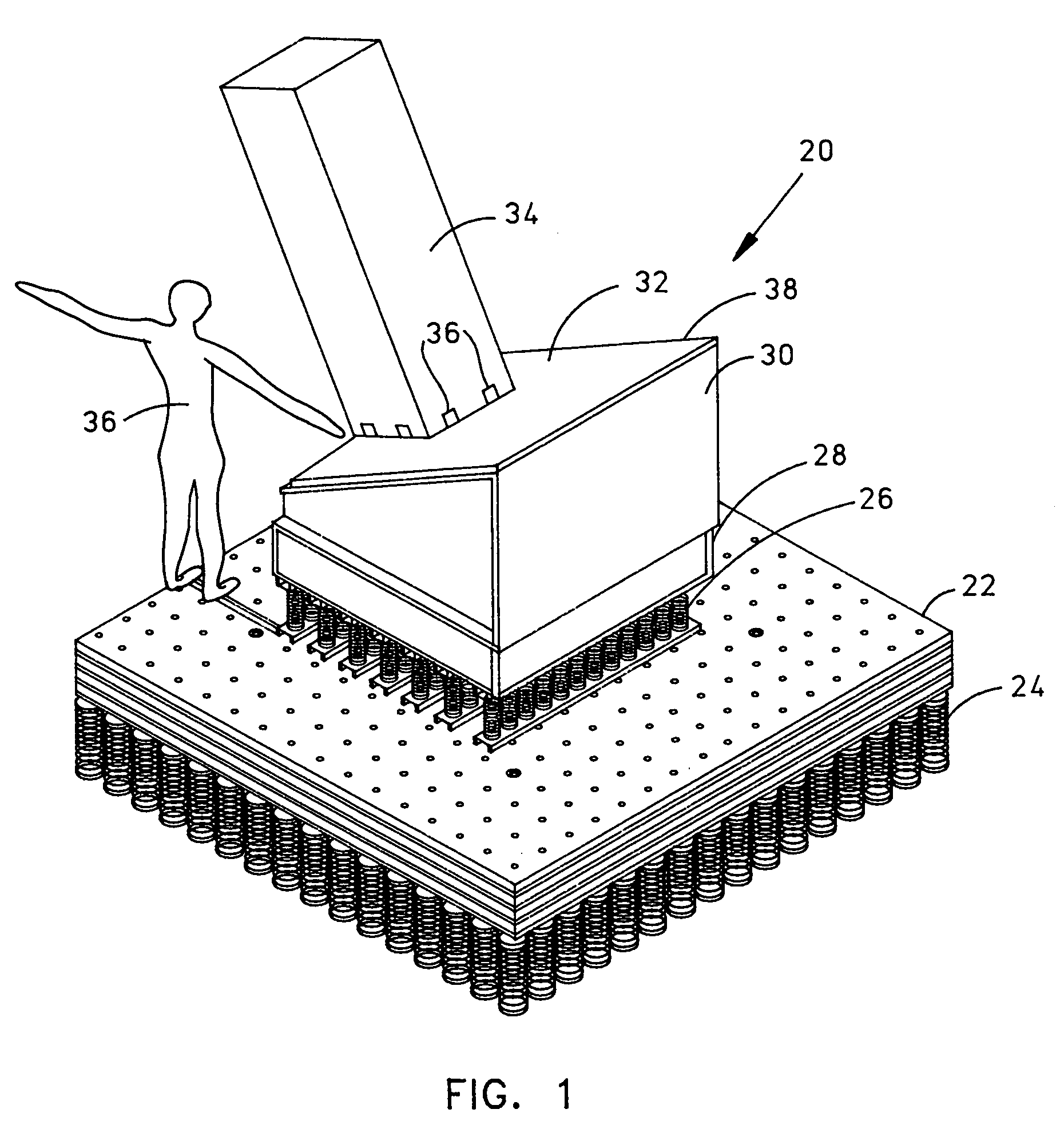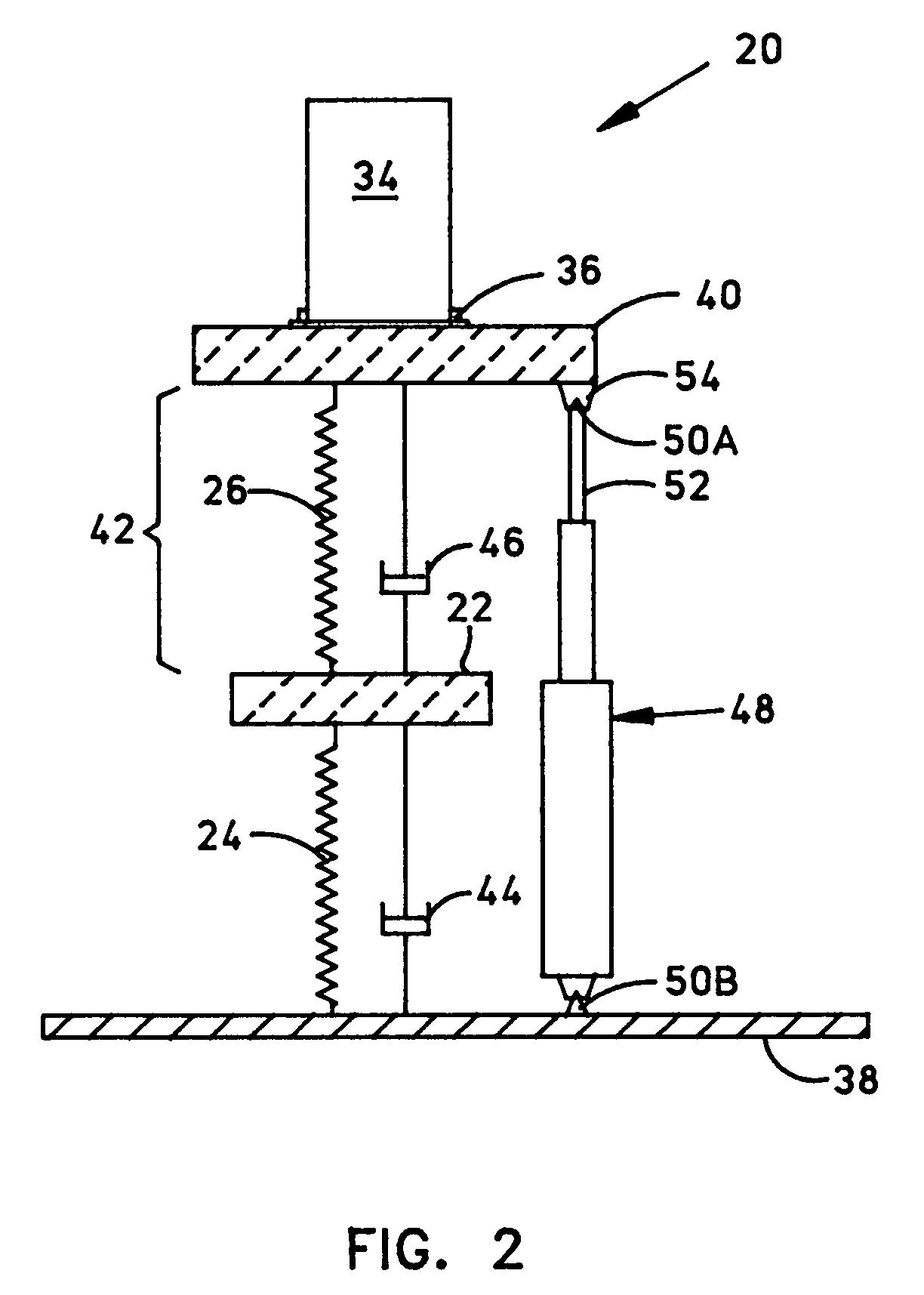Floating platform shock simulation system and apparatus
a floating platform and shock simulation technology, applied in the direction of instruments, structural/machine measurement, force measurement by elastic gauge deformation, etc., can solve the problems of increasing the shock energy of the unit, challenging the shock, and decaying waves
- Summary
- Abstract
- Description
- Claims
- Application Information
AI Technical Summary
Problems solved by technology
Method used
Image
Examples
embodiment 20
[0026]FIG. 1 shows a perspective diagram of a “two-degree-of-freedom” (2DOF) embodiment 20 of the system of this invention. A first mass element 22 includes, for example, a stack of heavy steel plates fastened together is supported by the first spring element 24, which is coupled between mass 22 and a primary system supporting plane (not shown). Spring 24 includes scores of coil springs operating in parallel in the example shown. The second spring element 26 is coupled between mass 22 and another lighter mass (not separately labeled) that includes a steel assembly 28 coupled to a mounting adapter 30. The mass comprising frame 28 and adapter 30 may be considered to be a single mass element for the purposes of this invention. Adapter 30 provides a 30-degree tilted rigid mounting surface 32 on which the equipment 34 under test is fastened by means of the fasteners 36, for example. The 30-degree mounting angle can be changed to any desired value by replacing adapter 30 and it can be rea...
embodiment 68
[0032]FIG. 5 shows a perspective diagram of a “three-degree-of-freedom” (3DOF) embodiment 68 of the system. It differs from system 20 (FIG. 1) in that the rigid surface 32 is replaced with a flexible plate structure 75 that straddles the two rail surfaces of adapter 30. Flexible plate structure 75 may be considered a mass-spring combination element including mass 70 and a spring 72 (FIG. 6) for the purposes of this discussion.
[0033]FIG. 6 is a schematic diagram illustrating the mechanical elements of system 68 of FIG. 5 and showing some additional elements that are not visible in FIG. 5. System 68 is generally adapted from system 20 (FIG. 2) by adding a third mass-spring system that includes the mass 70 and the spring 72, which spans the separation distance 74 between mass 70 and mass 40. The damping element 76 represents any losses in this third mass-spring system. Note that mass 70 is not drawn down by cocking apparatus 48 so that spring 72 is not available for storing any energy ...
PUM
| Property | Measurement | Unit |
|---|---|---|
| mass | aaaaa | aaaaa |
| storing energy | aaaaa | aaaaa |
| energy | aaaaa | aaaaa |
Abstract
Description
Claims
Application Information
 Login to View More
Login to View More - R&D
- Intellectual Property
- Life Sciences
- Materials
- Tech Scout
- Unparalleled Data Quality
- Higher Quality Content
- 60% Fewer Hallucinations
Browse by: Latest US Patents, China's latest patents, Technical Efficacy Thesaurus, Application Domain, Technology Topic, Popular Technical Reports.
© 2025 PatSnap. All rights reserved.Legal|Privacy policy|Modern Slavery Act Transparency Statement|Sitemap|About US| Contact US: help@patsnap.com



